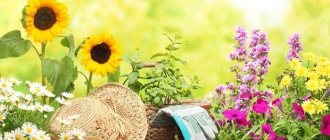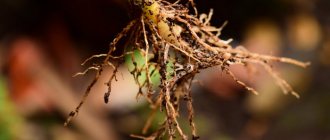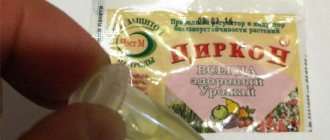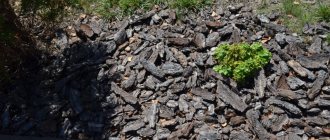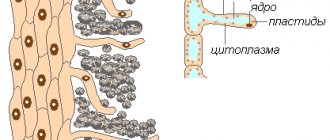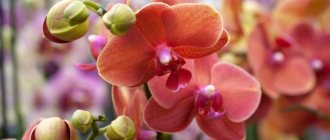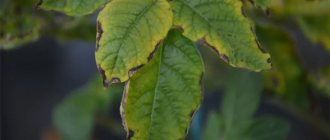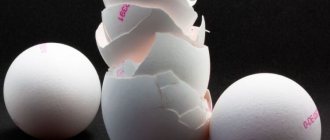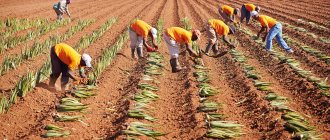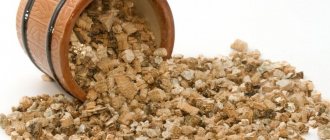Hello, dear readers and admirers! If you have been looking at the pages of my blog for several days now, you should know that I always prefer to do everything with my own hands. You also know very well that I am a big fan of indoor plants, and I have a lot of them. What conclusion can be drawn from this? That's right, today I will tell you what kind of food for indoor flowers at home is prepared from the simplest products. I dare to say that homemade fertilizers are in no way inferior to expensive store-bought preparations, and they will cost you almost nothing! Are you already wondering how this is possible? There is nothing complicated or mysterious, and now you will see for yourself!
Treat your plants with bananas
I won’t mislead you - you don’t need fruits to prepare fertilizers; you can eat them before you start making plants that are useful for your pets. You will make the fertilizer from banana skins - they contain a huge amount of elements that are so necessary for house plants.
The easiest and fastest way to use banana skins is to dry them in the oven or in the sun, and use a coffee grinder to turn them into a homogeneous fine powder. It can be stored in tightly closed containers for quite a long time. How to use banana dry fertilizer? Spread a thin layer of powder over the surface of the soil in containers with plants.
Now, with each watering, the most beneficial content of the fruit will penetrate into the soil. I almost forgot to warn you - you shouldn’t use banana fertilizer more than once a month.
If you prefer to use liquid fertilizers, then here too you can resort to the beneficial properties of banana skins. Preparing fertilizer is simple, you will need:
- 1 liter of water;
- 2 banana skins.
Infuse the banana liquid for about a week, strain, dilute with the same amount of clean water and pour over your pets. How often can you use banana fertilizer? I think once or twice a month is enough.
What are the benefits of eggshells?
Many gardeners prefer to use eggshells as a top dressing, since this is an organic fertilizer, absolutely natural and will not harm the health of either humans or plants.
Since ancient times, eggshells have been used as fertilizer, to loosen the soil and reduce acidity. All thanks to its composition, which is dominated by calcium. You may know that medications for high stomach acidity often contain calcium, and the same goes for soil; if you want to reduce acidity, add calcium-containing substances. Many people add chalk, but it is better to use egg shells, as they contain more useful elements.
Eggshells contain macroelements such as calcium, magnesium, sodium, and phosphorus. And a trace element - zinc. This wonderful composition allows you to saturate the soil with useful elements that will stimulate the growth of your plants. In addition, eggshells will attract beneficial microorganisms that will help saturate the soil with nitrogen, which will also have a beneficial effect on plant growth and productivity. And of course, the shell will serve as an excellent loosening agent, make the soil looser, increase oxygen levels and improve water permeability.
Plant growth by leaps and bounds – literally
I suggest you make plant food from the most common ingredient in pies - yeast. Do you think I'm joking? Nothing happened, even scientists studied the wonderful properties of yeast and were convinced that the product has a positive effect on plants, promoting rapid growth and lush development.
How to feed your pets with yeast? Prepare a simple mixture that includes:
- 5 gr. yeast (if you chose dry, then half a bag, if pressed, then a quarter of a teaspoon);
- 35 gr. Sahara;
- half a bucket of warm water.
Mix the mixture well and leave for several hours. You can safely start feeding the plants, but first dilute the liquid with warm water (for a half-liter jar of fertilizer - one and a half liters of water). Since I have a lot of pets, this portion of yeast fertilizer is used up completely, but if you have few flowers, then you can prepare the solution in smaller quantities.
I advise you to alternate banana feeding with yeast - the result will certainly delight you!
How to fertilize a dying plant?
Try this recipe for feeding weak plants , indoor flowers, seedlings, and you will be convinced that for them it will be a real elixir that brings them back to life.
How often happens: you put your whole soul into an indoor flower or seedling, and the result is disastrous. But do not rush to throw away a sick and depressed green pet. There is a way to revive it. And the secret lies in the unique properties of the living substance of a chicken egg.
Using wood ash to prepare fertilizer
I want to tell you right away that the main component, without which neither vegetables nor houseplants can do for me, is wood ash. I believe that this substance contains elements necessary for excellent development and growth, so I use ash not only for preparing substrates, but also as the main element of fertilizer.
Preparing the fertilizer will not cause you any difficulties, because you just need to mix:
- 3 handfuls of wood ash;
- 4 liters of water.
Let the liquid steep for about a week (no less!), then feed your pets. There is no need to dilute with water; the fertilizer is completely ready for use. I only advise you to thoroughly moisten the soil mixture in the pots first. Fertilizing can be used even in winter - plants, even during the dormant period, stock up on useful elements for good growth with the arrival of spring.
Features of using eggshells in the garden
Do not forget that the use of eggshells is only permissible on acidic and clay soils; in addition, not all plants respond well to the presence of such an additive.
Egg shells are rich in calcium, but an excess of this substance can adversely affect the absorption of nitrogen by plants, which will undoubtedly affect their growth.
Which plants are suitable for shell fertilizer?
Eggshells as fertilizer are an excellent solution for many plants. Eggshell feeding is suitable for almost all berries: raspberries, strawberries, currants, watermelon. Trees will not refuse such feeding either; these include cherries, peach, plums and apricots. Eggshell fertilizer is also suitable for nightshade, legume and pumpkin crops.
Whether your plant is a perennial or not, eggshell fertilizer will help almost any plant grow better, and even indoor flowers can be fertilized with eggshells. It is worth noting that for each culture, eggshells are useful in a different form; some cultures need a decoction, and some need a powder.
What plants don't like eggshells?
But there are also plants for which feeding from eggshells can only harm them. These plants include root vegetables, as well as potatoes and onions. In addition, eggshells should not be fed to plants that prefer acidic soil, most often these are flowers such as buttercup, heather, azalea, petunias, hydrangea and others.
Eggshells make the soil more alkaline, so plants may simply not take root in such soil. Root vegetables and potatoes may not get the beneficial minerals they need because eggshell calcium blocks their absorption. Moreover, the above-mentioned plant does not want the excessive looseness of the soil, which will be provided by eggshells.
Application of organic fertilizers is an indispensable requirement for good plant growth.
You know very well that plants respond to organic matter with rapid growth and abundant flowering. Of course, you can go to a specialized store and purchase the necessary fertilizer, but I suggest you do it differently - prepare the necessary fertilizers yourself.
I'll tell you how to use chicken manure to provide your plants with everything they need. Take 10 g. dried droppings and fill with water (two liters). Leave for a week, stirring the liquid regularly.
I warn you right away - you cannot use pure fertilizer; it must first be diluted with plenty of water! The recommended proportions are 1:25, but I usually take a little less water.
The secret to the effectiveness of the recipe
Various liquid extracts and granular fertilizers can also provide excellent results. They can cause accelerated growth or increased fruiting by increasing the concentration of vitamins in plant tissues. But this does not make the soil any better. And the option of fertilizing the land with egg whites will have a longer lasting effect with an expanded spectrum of action.
What is the secret of such effectiveness of egg white infusion is not advertised. Scientific works on this topic are also not easy to find. Therefore, ordinary lovers of caring for their green pets can only trust the advice of their ancestors and make all kinds of guesses. According to one opinion, the secret of this recipe lies in the composition of the egg white. In addition to water, proteins, fats and carbohydrates, it contains various enzymes, B vitamins and glucose.
It is glucose that is considered a very important, even vital, substance for home flowers.
After all, it is not only a universal building material from which complex molecules of such organic substances as cellulose, lipids, starch, proteins and nucleic acids are formed. In addition, glucose carries deposits of energy necessary for growth, respiration, nutrition, fruiting, reproduction and other life processes of plants.
Citrus peels are a storehouse of essential elements
If you have citrus fruit lovers at home - tangerines, lemons or oranges, then rest assured that your plants will always be healthy and beautiful. What is the connection between tangerine lovers and your flowers? It's simple - the peel will make an excellent food!
Take the peel (it doesn’t matter whether it’s dry or fresh), fill the jar a little more than half, then fill it to the top with warm water. Infuse the aromatic liquid for a day, then strain through a colander, dilute with water (1 part citrus tincture - 3 parts water) and water the plants.
How often can citrus fertilizers be applied? In winter I cook them once a month, but in the warm season more often - at least 2 times a month. If you want, you can alternate this fertilizer with yeast or banana.
Revitalizing recipe: flower food made from egg whites
The miraculous recipe is inherently simple and accessible to everyone. It is enough to take 6 egg whites and fill them with 1 liter of warm water. The composition is left for a few minutes to infuse. Experts advise placing the container in a cool and dark place (but it is better to avoid the refrigerator option). The consistency remains in this state for at least 7 days. After a week, 10 liters of water are added to the container. The solution can be used to water plants.
Note! Flower food made from egg whites has a very unpleasant odor, so the room must be regularly ventilated, especially after feeding the plants.
You can level out the “rotten” aroma by reducing the concentration and proportions of the ingredients, since not all gardeners require exactly 10 liters of fertilizer. It is better to take about 6 liters. It is enough to take 1 liter of egg white, and then dilute it in 0.2 liters of water. The infusion period remains the same.
The total amount of fertilizing is enough to feed any plant that is grown on the balconies and window sills of our compatriots with microelements.
Feeding indoor flowers from egg whites allows you to breathe a second life into them. After application, active growth is observed, the plant develops, and in some cases even blooms. According to the assurances of the experimenters, you can count on the wildest expectations.
Collection of raw materials and preparation of fertilizer
It is best to start collecting raw materials for future fertilizing in the winter so that you can accumulate the required amount. In this case, it is very important that the shell is clean, otherwise the protein remaining on the shell will gradually begin to rot. In order to avoid this, it is recommended to thoroughly wash the eggshells and then dry them thoroughly.
According to research, brown shells are not only thicker and denser, but also contain more useful components. Therefore, if possible, it is worth using it for feeding.
Dry powder
In order to prepare dry fertilizer, you need to thoroughly grind the shells. You can process it in a coffee grinder, meat grinder, or simply roll it with a regular rolling pin. It's very easy to do. It is enough to place the raw material on a kitchen board or table, cover it with baking paper and roll it with a rolling pin, pressing hard on it. The degree of grinding may be different, but it is better if the mass is almost powdery.
Dry fertilizer can be used immediately or stored. To prevent the product from spoiling, you should follow these tips:
- use only raw eggs, not boiled ones;
- rinse the shell thoroughly and then dry it;
- fry the raw materials in the oven so that they are easier to grind and can be stored longer;
- store in a dry and hermetically sealed container. A glass jar is best for this.
Infusion from the shell
Preparing a solution from eggshells does not take much time. This infusion is perfect for potting up home flowers, seedlings, and garden plots. We offer step-by-step instructions for preparing such fertilizer:
1. You need to collect the eggshells. It is best to use the whole shell without crushing it first. It is also important that the shell is raw and not cooked, as it will retain more nutrients.
2. The inside of the shell should be washed in warm water, removing any remaining protein. In this case, the finished infusion will not give off an unpleasant odor.
3. Place clean egg shells in a separate liter jar.
4. Next, you need to pour warm water into the container. There is no need to fill the jar to the brim.
5. Close the container with a lid and leave to infuse for 4-5 days. At the same time, it is important not to forget to shake the jar of eggshells once a day.
6. When the infusion is ready, you will notice foam on the surface of the water. An unpleasant odor may also appear, but if the eggs have been washed well, it will not be very strong.
7. All that remains is to dilute the finished infusion in clean water, maintaining a ratio of 1:5, mix and you can water your indoor flowers. This fertilizer has a very good effect on the development of flowers and their growth.
If desired, you can refill the same shell with water two or even three times. Better yet, fill the jar not with tap water, but with snow. Settled rainwater is also suitable.
Truths and lies about shells
Novice gardeners sometimes think that natural fertilizers are safe for garden crops and do not require strict adherence to the dosage when applied, which is not entirely true.
Absolutely harmless
Although most annual plants respond positively to the application of alkaline fertilizers, additional vinegar and iron are added when fertilizing crops that prefer soil with a high level of acidity. To prevent soil contamination by infections, the shells should be thoroughly washed.
You can sprinkle as much as you like
Perennials such as sorrel, lemon balm, orchids, raspberries, root vegetables such as beets, carrots, and some types of indoor flowers do not tolerate calcium, and there is no point in feeding them with eggshells. For annual plants that feel comfortable in alkaline soil, organic fertilizer can be applied in large quantities in dry form and used for watering.
Protects from pests
Egg shells really help to cope with some parasites. To remove the white butterfly from the site, large pieces of shells are laid out on large leaves of garden plants.
To combat the mole cricket, which eats up the roots of the seedlings and bites the stems, coarsely crushed egg shells are scattered between them, which are lubricated with aromatic sunflower oil. The pest stumbles upon sharp edges, pierces the insides and dies.
When slugs appear on the site, a high barrier of earth and shells is built around the garden bed, through which it is difficult for creatures with a soft body to get over. The method loses its effectiveness if the parasites have laid eggs.
Moles cause damage to garden crops, but it is useless to fight them by scattering sharp debris on the ground. The animal easily digs passages in other places with its powerful front paws like a shovel.
Use for growing seedlings
Instead of cups, a substrate is poured into a large shell and the seeds of cucumbers, lobelia, which form many buds, or other miniature plants that bloom all summer are sown. The grown seedlings are moved to the flowerbed. Containers made from shells are environmentally friendly, serve as a complete fertilizer for seedlings, but are inconvenient for use, and difficulties arise when preparing for planting seeds.
To maintain the integrity of the shell, the egg must be broken very carefully and the inside thoroughly washed. The fragile shell is easy to crush when piercing a hole, when filling it with substrate, and when caring for seedlings. It is not easy to remove bushes from such a container without breaking the roots.
